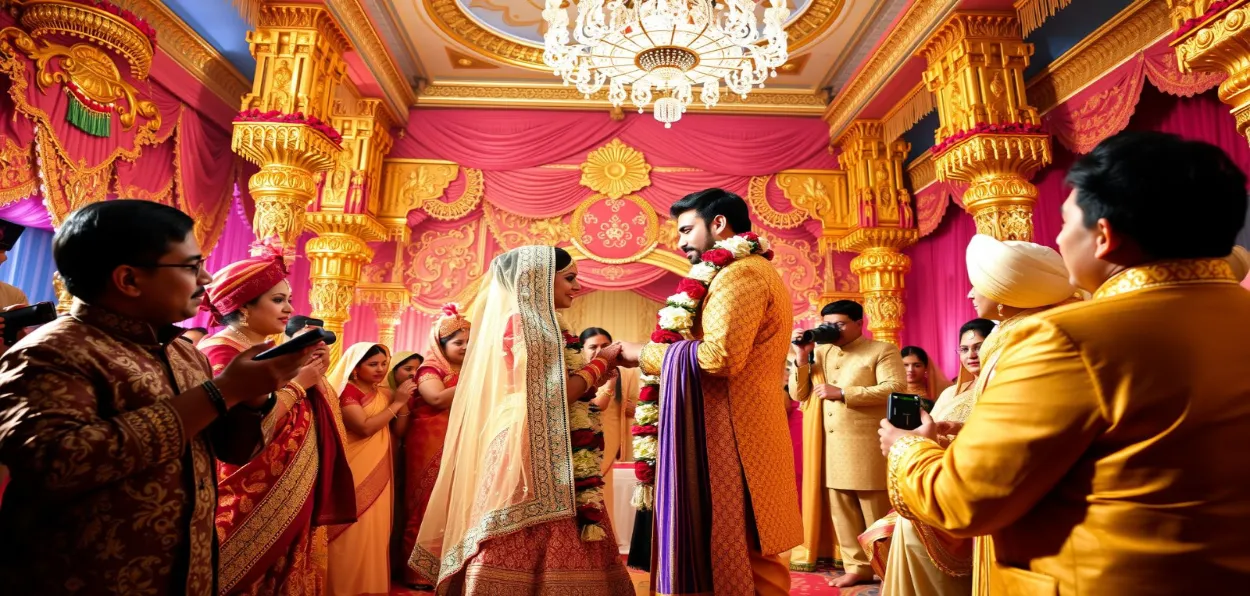
Atir Khan
"How much money do you think is needed for a wedding? Would ₹3 lakh be enough?" asked Rupesh, an Uber driver from Ballia, a small town in Eastern Uttar Pradesh.
His frustration was evident. His alcoholic father had squandered away the family’s savings, leaving Rupesh with the responsibility of repaying his father’s debts. The question was directed at the journalist seated in the backseat.
Rupesh’s question, though simple, sparked a thought in the journalist's mind: How much money is required for a wedding today?
As if anticipating the journalist’s curiosity, Rupesh quickly added, “Does the Yogi Government offer loans for weddings? I heard from a friend that someone got a loan for their marriage, and that the UP Government also provides items like TVs and fridges as part of the deal.”
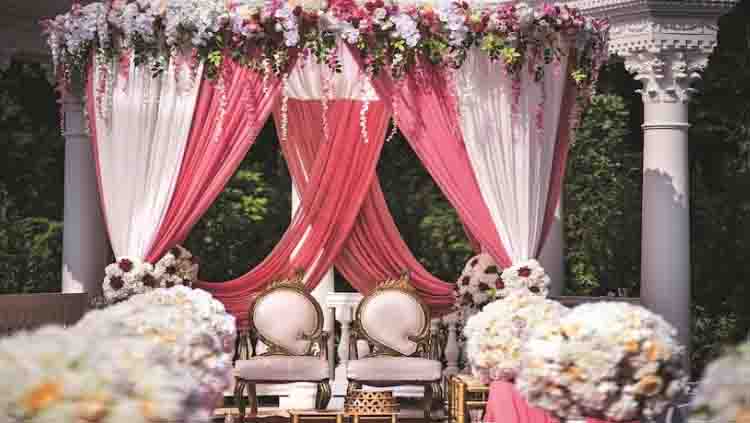
Setting of an oppulant wedding ceremony
The journalist, who was tired from a long outstation assignment and heading home from the airport that night, found himself intrigued by the query.
The next morning, he sat down at his computer to research the subject, uncovering some surprising facts.
India’s wedding industry is a massive business, valued at $40 billion and growing at an annual rate of 17%. In perspective, the global wedding market is worth approximately $372 billion, and India ranks second worldwide, just after the United States.
One out of every four weddings in the world takes place in India.
According to a survey by the Confederation of All India Traders, the wedding business in India was estimated to be worth ₹5.5 lakh crore between January 15 and July 15 of this year.
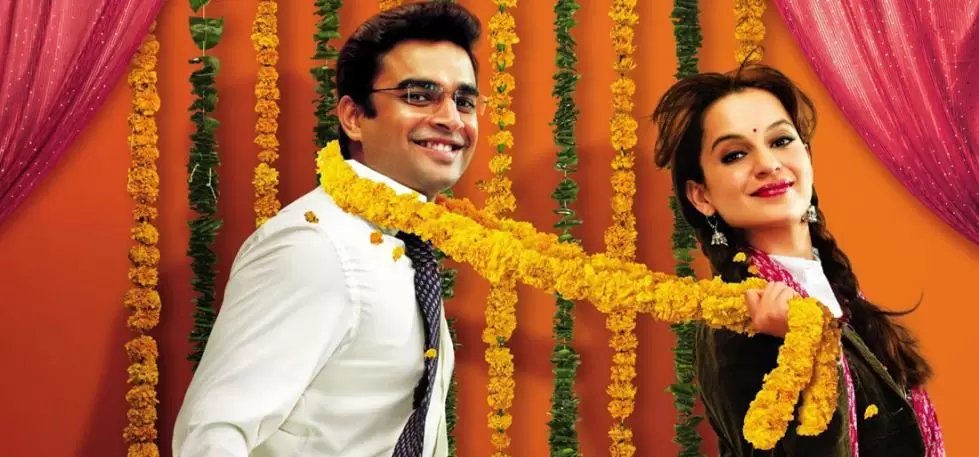 Bollywood glamourises wedding celebrations
Bollywood glamourises wedding celebrations
To put that in perspective, this amount is more than six times the annual budget of the Delhi government, which stands at ₹76,000 crore.
The scale of this industry shows just how important the wedding industry has become.
India has long been a country of rich customs and traditions, and weddings have always held a central place in its cultural fabric. Over time, however, weddings have evolved into extravagant affairs.
What used to be a simple family celebration, organized by uncles, aunts, and cousins, is now often planned by professional wedding planners.
Even middle-class families, once content with modest ceremonies, now prefer to hire experts to handle every detail for a smooth, hassle-free celebration.
The influence of Bollywood cannot be understated. Movies like Hum Aapke Hain Kaun, Monsoon Wedding, Hum Saath Saath Hain, and Band Baaja Baaraat have romanticized and glorified traditional wedding rituals, turning them into grand, cinematic events.
In many ways, today’s real-life weddings resemble scenes straight out of a Bollywood film, with brides and grooms often expected to perform their roles in front of cameras, telling their love stories in visually stunning ways.
A Muslim couple at their wedding
Destination weddings are also on the rise, with budgets ranging from ₹10 lakh to ₹1 crore—or even higher. For someone like Rupesh, the ₹10 lakh mark seems almost like a distant dream.
In stark contrast recently a Muslim family in Rampur, a small district in Uttar Pradesh gifted 22-carat gold jewelry sets to all the relatives, who attended their marriage ceremony. In the same town, there are those poor who depend on charity to get their daughters married.
In India, weddings have always been a grand, multi-day affair, regardless of religious background. What has changed over the years is the approach and attitude towards these sacred ceremonies.
Brides are no longer expected to be shy and reserved; they actively participate in planning their weddings, choosing everything from outfits to venues.
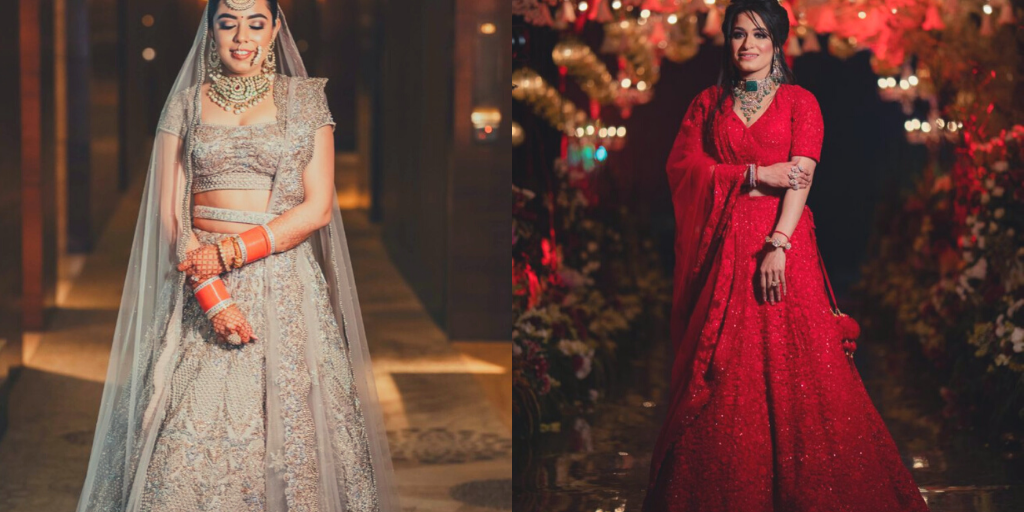 Bridal dresses on sale
Bridal dresses on sale
Grooms, too, are no longer expected to be stiff and aloof. The guests themselves dress in such a way that they seem like movie stars, bringing a sense of glamour to the proceedings.
These changes have been widely welcomed. Weddings are meant to be celebrations of love and union, and it is heartening to see people embrace these joyous occasions with such enthusiasm and style.
Indian weddings are not just an important cultural event—they are also a significant driver of the economy.
The wedding industry creates jobs and supports numerous sectors, including marriage bureaus, wedding planners, printers, banquet halls, decorators, tailors, textile companies, florists, caterers, cooks, hospitality and transport services, to name just a few.
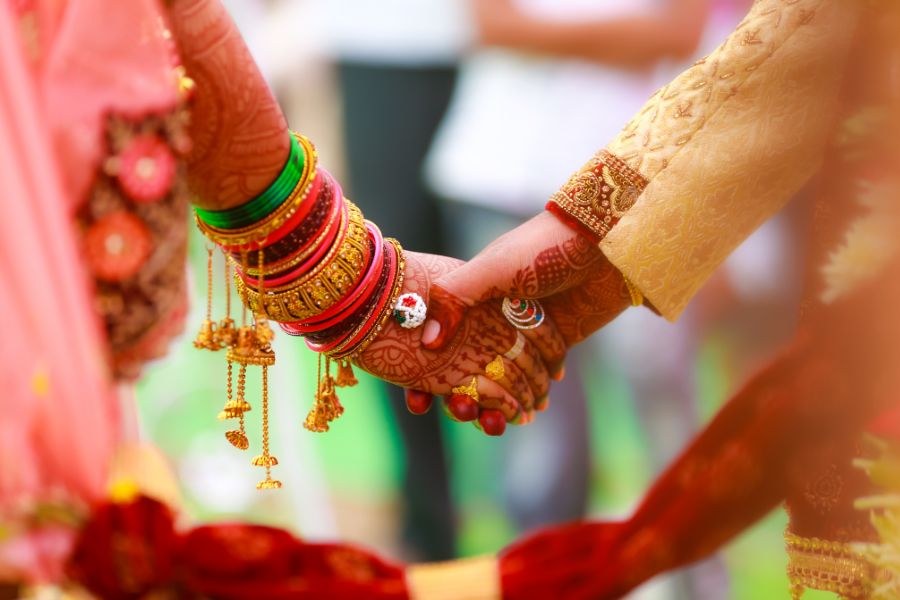
However, the growing lavishness of these celebrations raises the question: Is all this extravagance necessary? The opulence surrounding modern Indian weddings seems to be increasing year by year.
Wedding venues like resorts and city banquet halls are often booked for over 100 days each year, contributing significantly to the economy. Just recently, an estimate suggested that North India alone witnessed 1.4 lakh weddings on a single day.
While the increase in weddings may be seen as a reflection of a growing population in a country that ranks high for population growth, the question remains: Can we rein in the excessiveness and waste that accompany these celebrations?
The sheer scale of modern weddings often puts a tremendous financial burden on the bride and groom's families. For individuals like Rupesh, the pressure to pay for such lavish events can be overwhelming.
While weddings are meant to be joyous occasions, the escalating costs and expectations associated with them can create unnecessary stress and financial strain, especially for those already struggling with debt.
In the end, while the grandeur of Indian weddings is a source of pride and celebration, it is important to ask whether all the excess is truly necessary.
Perhaps it is time for a more balanced approach—one that respects tradition but also prioritizes financial well-being and the spirit of the occasion over ostentatious displays.
ALSO READ: In Kerala people suffering incurable pain are not left alone
Just to answer Rupesh’s question UP Government actually provides financial assistance of Rs 51,000/- for marriage under the Shadi Anudan Scheme. All those who fall below the poverty line are eligible for the scheme.
